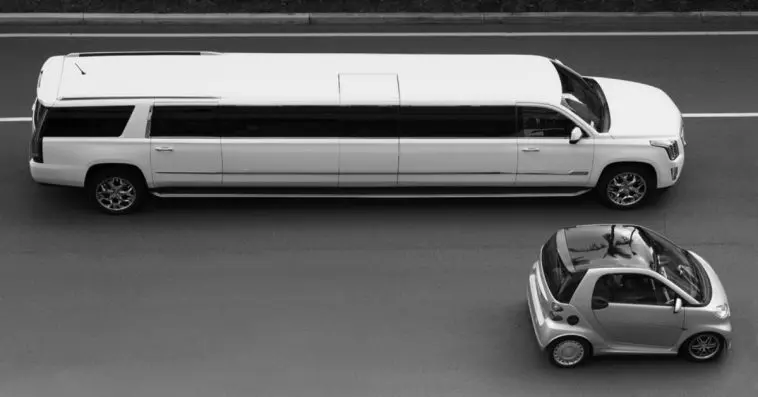There are so many things that factor in when buying a car, and one of them is the garage space.
My garage space is not that big, and before purchasing a car I needed to know if I can fit it in.
I decided to research, how long is a car and found it fascinating. So, here’s everything I’ve gathered related to the question.
Cars come in varying lengths, depending on the class and also the brand. A typical mid-size car like Audi A4 measures 4.5 meters or 14.7 ft long on an average.
But, every manufacturer has different lengths for every model of their car. The reason I mention it as average is that some might be shorter, while others longer, which again depends on the car.
For a rough estimate, I can conclude, a car smaller in size would be 3 – 4 meters long, and the longer classes, including trucks, more than 5 meters.
This shows that there is a massive difference in sizes between cars of various classes.
You can obtain this information online from the manufacturer’s website or measure them yourself.
TABLE OF CONTENTS
Average Length Of The Car
If you want an approximation, then I can say that the average length of the car is 4.5 meters, but that is for a mid-size car.
Realistically speaking, there is no average length since cars are of diverse classes, and each class has a specific length, which varies for each manufacturer.
With the average, you cannot do much unless you have the lengths of various classes.
Here are the basic lengths of various classes of cars. Remember that these are subject to change depending on the models.
| Class: | Length (in ft): | Length (in meters): |
| Mini Cars | 10.5 | 3.2 |
| Small Cars | 13.8 | 4.2 |
| Mid-Sized | 14.8 | 4.5 |
| Full-Sized | 15.7 | 4.8 |
| Small SUV | 14.4 | 4.4 |
| Large SUV | 16.7 | 5.1 |
| Small Pickup | 16.3 | 5 |
| Large Pickup | 18.4 | 5.6 |
Length Depending On The Classes
As mentioned earlier, the length of the cars depends on the class. Every class of vehicle has varying dimensions depending on the spaciousness, boot space, etc. But, they fall within a particular range.
City Cars
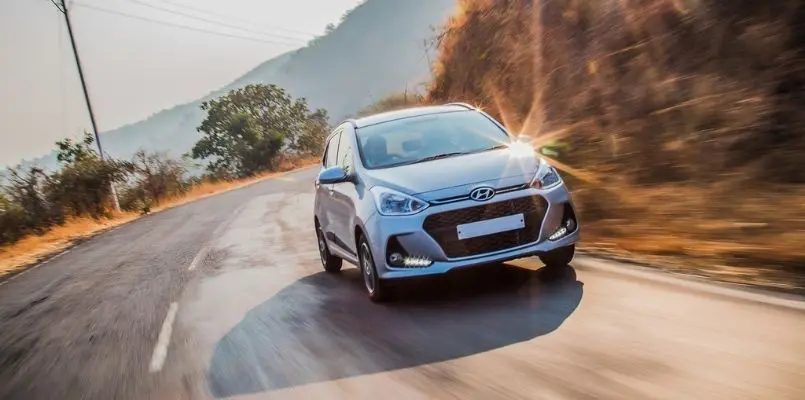
Cars similar to Hyundai i10 are classed under city cars otherwise called as urban cars.
They are the smallest of the lot and their lengths range from 2.7 m to 3.7 m. These cars have varying boot space but the length generally fall within these dimensions.
Mini Cars

From the Mini Cooper to Suzuki Alto, you have a considerable choice when it comes to these cars.
Extending from 3.8 m to 4.1 m, these cars have more space than the former but smaller than the compact cars.
Compact Cars
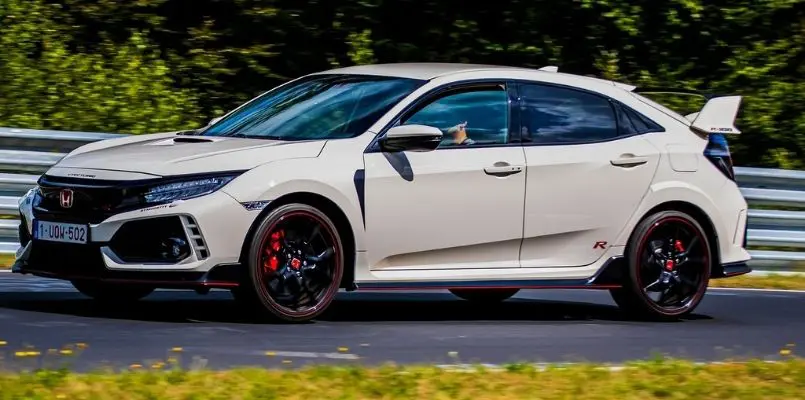
From Honda Civic to Kia Rio and Citroen, these cars are compact yet spacious with a good balance between the two. They measure 4.2 m to 4.4 m lengthwise.
Family Cars

On the more practical side, these cars vary from Infiniti Q30 to Audi A4 on the expensive side. Their dimensions are 4.4 m to 4.7 m with more passenger space. But the boot space isn’t that much.
Estate Cars
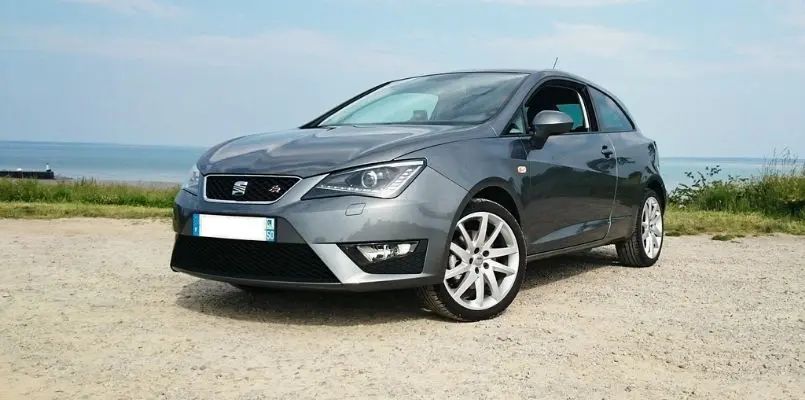
Cars like SEAT Ibiza come under the estate cars with an extended space over the roof. A crossover between the compact and the saloon, these cars average between 4.2 m to 5 m.
Luxury Cars
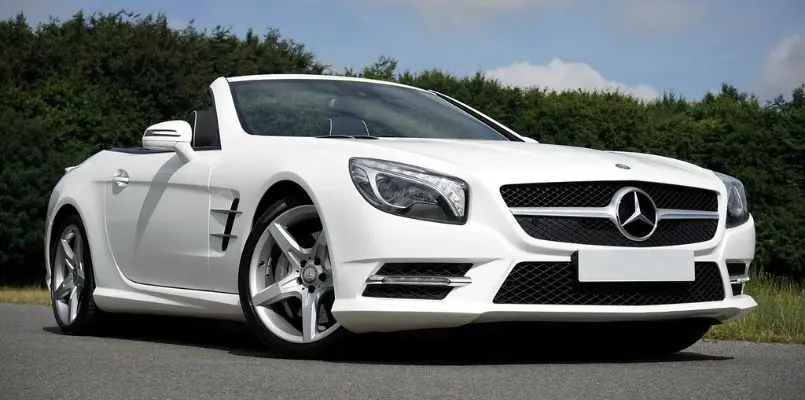
From the Mercedes SL to Maserati, the luxury cars are longer with innovative features including retracting roof, powerful engine, and extensive safety points. Their lengths are 4.6 m to 5.6 m.
Sports Cars

Not known for their space or boot capacity, the sports cars measure 4 m to 5 m. The importance is placed on the engine power rather than luggage space.
Small Crossovers
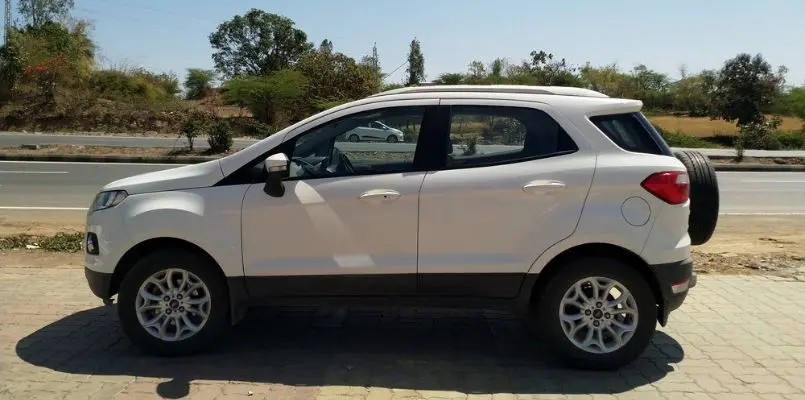
Ford Eco sport and Suzuki S cross are called crossover cars with off-road features. They allow for easy mobility and has more height. Their length fluctuates between 3.7 m to 4.3 m.
MPV’s
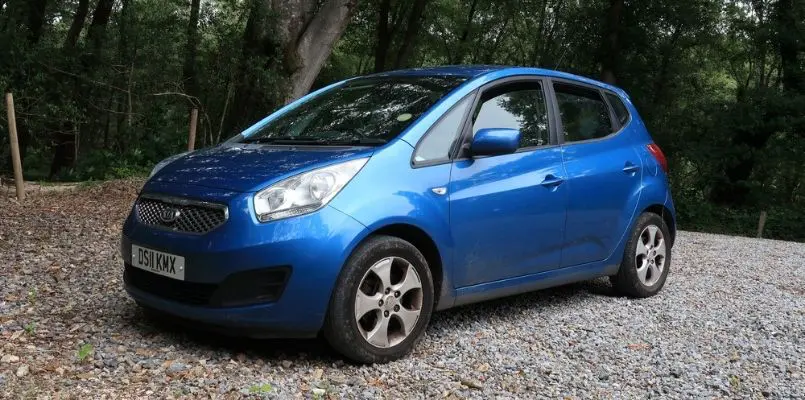
The MPV cars are seven-seaters with a delicate balance between interior space and boot space.
They also have a larger boot space. Automobiles like Kia Venga and Ssangyong Rodius are examples of the same. Length: 4.1 m to 5.1 m.
Compact SUV’s

With a high driving seat, the compact SUV’s are ideal for everyone and has more features like off-road capability.
From Jeep Renegade to Ford Escape, they are quite famous among all ages. Their dimensions are 4.2 m to 4.7 m with high ground clearance.
Large SUV’s
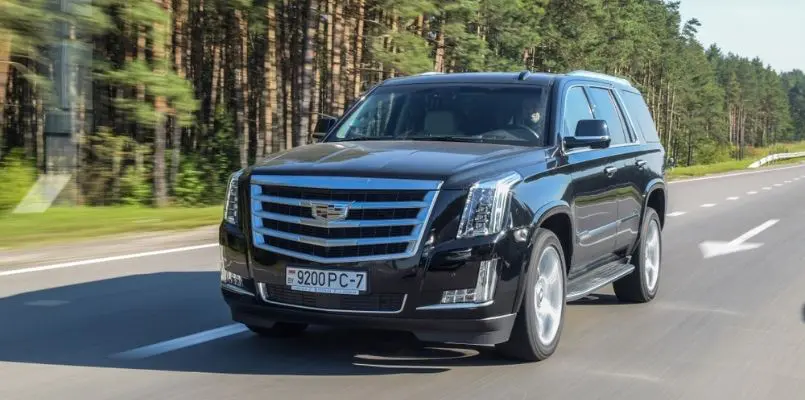
Ranging from the Cadillac Escalade to Mercedes G class, Mercedes GLS, and more, the large SUV’s are 4×4 seaters with the capability to drive in challenging terrains.
And accordingly, the length varies between 4.6 m to 5.1 m.
Pickup Trucks
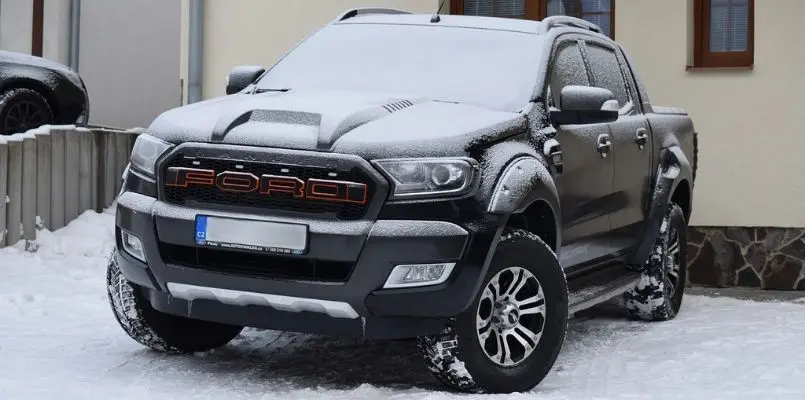
Big automobiles with large space capability better interior amenities, the pickup trucks are similar to Ford Ranger. They are better than the SUV’s and measure the largest at 5.2 m – 5.7 m.
How Do I Find The Length Of My Car?
There are several reasons why you would want to know the length of a car, including designing a garage or a parking space.
In this case, the more accurate you are, the better. You can find out the length in a few different ways of which few are accurate and others are not.
VIN Decoder
Did you know that your VIN can help you obtain the length of your car?
A VIN decoder can help you do just that. And, it is probably an accurate way, as long as the decoder is trustable.
Decoders require you to input a 17 digit code but cars made before 1981 have a 16-digit VIN. Therefore it doesn’t work for a VIN decoder.
The VIN or Vehicle Identification Number is a 17-digit code made of letters and numbers that is unique for each and every car.
With the VIN, you can gather all the details pertaining to the car, including make, model, engine details, size, paint code including the security details of the vehicle.
The VIN is present is a few locations in the car:
- Front of the dashboard on the driver’s side (Look from the outside where the windshield begins)
- Post on the driver side door right where it latches
- Insurance
- Title of the car
You can use the VIN in any free decoder available online, and it will spit out the necessary details. The one that I use is the AutoZone decoder.
Check With Your Local Dealer
Do not trust a decoder? You can contact your authorized local dealer, and they might be able to get the details for you.
For that, you need to have the VIN and the license number in hand. With these in hand, they can tell you the length of the car.
Just call the number on the car and ask for the length. This is an easy, reliable, and secured way of getting what you need.
Auto Online Shop
Another way of finding the length of your car along with other details like the weight is by contacting an auto online shop.
But the question is, how reliable is the information? Be prepared for false information, and contact them as the last resort.
Most auto online shops have the option to enter the license plate number.
With that in hand, you can obtain any information you require. The data is more on the side of helping you to single out a car, rather than existing details.
Measure It Yourself
Of course, it looks silly when I suggest this.
But, assuming that, you have added accessories in the front and back like the bumper which affects the length of the car, measuring the length yourself seems to be the right option.
While the above ways give you information on the span of the car out of the factory, it doesn’t give you the current length of the car.
If the accurate measurement is what you need, measure it yourself. Take a yardstick and place it below your car from the back end to the front. This gives you the exact dimensions of your car.
How Much Does A Car Weigh?
This is another question which we don’t give much credit to, but have you ever wondered about it.
The weight really matters if you are hooking the car to trailers or hauling in heavyweights. Much like the length, the weight also differs depending on the class of the vehicle.
Moreover, the make and model of the car also affects the weight of the car.
The average car weighs about 1600 kg for a mid-sized car like Audi A4. With a smaller car, it is 1200 kg, and a larger car is about 2000 kg.
For the former, I have taken Nissan Micra into reference, and Audi A8 for the latter.
Here are the various weights of the different classes of cars.
| Class: | Weight in lbs: | Weight in kg: |
| Small Cars | 2,645 | 1,200 |
| Mid Size Cars | 3,527 | 1,600 |
| Large Cars | 4,409 | 2,000 |
| Small SUVs | 3,307 | 1,500 |
| Mid-Size SUVs | 5,291 | 2,400 |
| Large SUVs | 6,614 | 3,000 |
Various Types Of Weight
The list above states the curb weight which is the weight of a factory-made car without any added weights. But there are more relevant weights that you have to know.
- Curb Weight: Weight of the vehicle devoid of the driver, passengers, and any load.
- Gross Weight: Weight with all the cargo including passengers and driver.
- Gross Combined Weight: This comes into play if you have a trailer. It is the combined weight of the vehicle and the trailer.
- Gross Weight Rating: Maximum weight your automobile can handle.
- Gross Axle Weight: The weight on each of the 4 axles.
- Maximum Load Trailer Weight: Weight of a fully-loaded vehicle including the trailer.
- Payload: Weight of the car, its load, passengers, driver, and also a loaded trailer.
- Gross Axle Weight Rating: Maximum weight handled by one axle.
Frequently Asked Questions
Q1: How Wide Is A Car?
The average width of a car(sedan) is between 1.8 m and 2 m.
The width depends on the make and model of the car and of course the class of the car. A small car averages at 1.7 m and a large car at 1.9m. An SUV measure 2 m at its width.
Q2: How Can I Find The Weight Of My Car?
All cars have a sticker with the specifications on the inside of the driver’s side door near the locking bracket.
Your manual should also have the details. Failing to find the weight using the above methods you can call the authorized dealer for the details.
Q3: How Long Can A Car Last?
The average lifespan of the car is 150,000 miles or 8 years whichever comes earlier.
Crossing 200,000 miles, the car is bound to fail any minute and requires regular maintenance.
But cars nowadays are about 20 years owing to technological advancements.
Conclusion
The length of cars generally varies between 3 m (small car) to 5.6 m (large pickup).
A mid-sized car averages at 4.5 m (Audi A4) but most cars are smaller or larger depending on the class of the car. It also differs between the various makes and models of the vehicle.
You’ll need to find the length of the car to design the parking space, and also to find if your car fits a tight garage.
In that case, your VIN can help you find the length of the vehicle.
Enter your VIN in the VIN decoder and it will give you the dimensions. Missing that you can contact the authorized dealer for the details.
Another ignored question is the weight of the car which is important if you tow another vehicle or a trailer.
It also differs depending on the various models and brands but averages at 1600 kg for a mid-sized car.
Apart from the curb weight which is the much-talked-about weight, you’d also have to know about the other weights which I have listed out for you.


